William F. Miles Park is located on Shelbyville Road, across from the Valhalla Golf Club. The park is roughly 130 acres of fields and riparian forest. Most of the park consists of undeveloped fields that were farmland many years ago. The park boasts many fishing ponds and a canoe launch on the scenic Floyd's Fork. Check out the map below to get an idea of where the park is located and how it is laid out.
View Miles Park/Floyd's Fork in a larger map
I decided to visit Miles Park today and make it my first post because it will be the gateway to the Parklands project when it is completed. The Parklands is an expansive parks project that is currently under construction that will run along the Floyd's Fork corridor. The park system will add roughly 4,000 acres of parklands and will begin at Miles Park at Shelbyville Road and continue all the way to Bardstown Road near the Bullit County border. The section that Miles Park will be a part of will be called Beckley Creek Park, the centerpiece of which will be the Egg Lawn, a 23 acre open space just south of I-64. The park will also be a part of the Louisville Loop, a plan to add more than 100 miles of bike and pedestrian paths in the city. The parks will begin opening in sections with Beckley Creek scheduled to be opened first, sometime in 2012, while the other sections are scheduled to open in 2015.
It was a beautiful day to be at Miles Park. My dad and I arrived in the afternoon as the lazy winter sun was winding its way down. The weather was cold but the full sun kept me warm and melted off the winter blues we all get at this time of year. After a December full of overcast and ice, 2011 is off to a great start with warmer weather and plenty of sunshine.
As soon as we arrived we spotted a small bird in a tree out in the middle of the field. I got my binoculars out and identified an American Kestrel sitting pretty in a Sycamore tree. A very good find for an area surrounded by development. The habitat is open with plenty of tall trees to perch in and hunt for rodents, so perhaps I shouldn't be too surprised to find this guy here.
As soon as we arrived we spotted a small bird in a tree out in the middle of the field. I got my binoculars out and identified an American Kestrel sitting pretty in a Sycamore tree. A very good find for an area surrounded by development. The habitat is open with plenty of tall trees to perch in and hunt for rodents, so perhaps I shouldn't be too surprised to find this guy here.
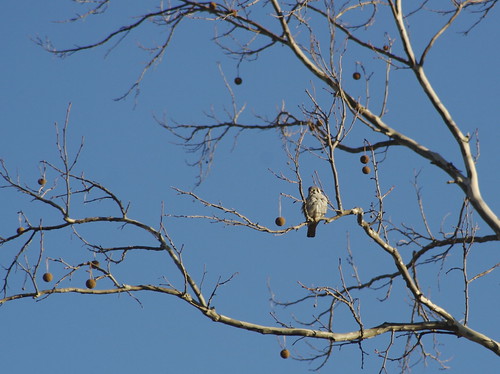
American Kestrel
While I was taking pictures of the kestrel we noticed another raptor silhouette in a tree. We approached carefully and I was able to get my camera on an immature Red-shouldered Hawk. He didn't get to stay around long because he was being incessantly harassed by the kestrel we saw down the road. The kestrel was dive bombing the Red-shouldered Hawk repeatedly and the hawk flew from tree to tree but he couldn't seem to get the kestrel to leave him be. The Red-shouldered Hawk didn't appear to have any prey for the kestrel to steal, so I assume the kestrel was just trying to send the hawk a message that this was his hunting territory and that he wasn't going to let just any hawk intrude and take what is rightly his.

We continued to the canoe launch to check out Floyd's Fork. The water was up pretty high from recent rains and snow melt. The scene was beautiful, with tall Sycamores and Box Elders hugging the bank, some leaning so far as to seem to be contemplating taking a dip. I suspect they will wait until spring (or the next wind storm) when the water is warmer to take the plunge.
The large stately Sycamore is a beautiful tree in winter, with white peeling bark and dangling fruit overhead; it is in winter when it truly shines, alerting to the world the presence of water and wet soils, creeks and streams. In summer they carry large broad leaves that resemble maple leaves. In fall they turn orange, red, and yellow, a russet splash of color that is reflected in the water below.
The large stately Sycamore is a beautiful tree in winter, with white peeling bark and dangling fruit overhead; it is in winter when it truly shines, alerting to the world the presence of water and wet soils, creeks and streams. In summer they carry large broad leaves that resemble maple leaves. In fall they turn orange, red, and yellow, a russet splash of color that is reflected in the water below.
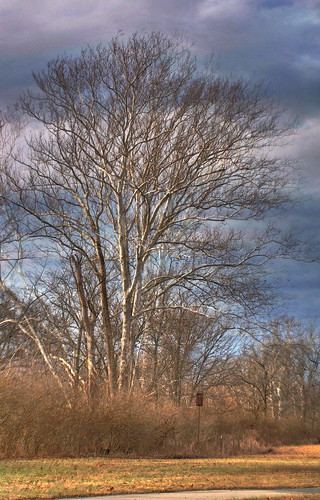
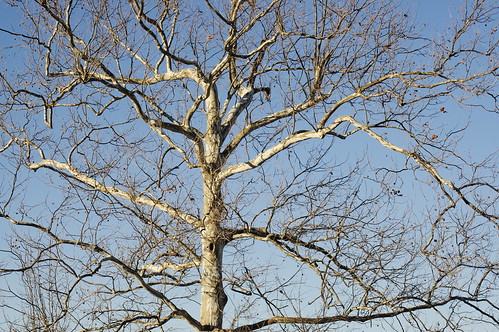
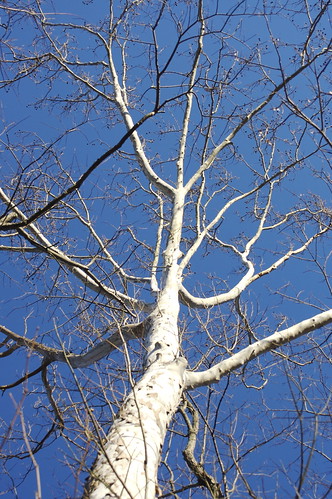

Being a bit of a bird nerd, I couldn't help but notice hearing the sounds of the woods in the winter, a Red-bellied Woodpecker drumming and chatting to himself, Carolina Chickadees flitting from branch to branch looking for food, and a Belted Kingfisher coursing over the water making its clattering call. Miles Park has some great intermediate type habitats with young trees and shrubs, just the type of habitat birds love. This place would be great for bird watching and I plan on coming back in the spring to hear the Yellow-throated Warblers I just know will be in the Sycamores singing.
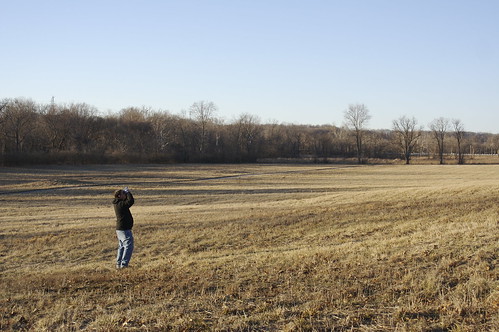
If you go to Miles Park you may see several wood boxes hanging around. What you are seeing are not bird boxes but instead bat boxes, and they are everywhere. Inside the box are several planks that allow just enough space for bats to squeeze in to and roost. They are meant to mimic the space between a tree trunk and the bark where bats naturally roost at night in the summer. Their most common inhabitants are Little and Big Brown Bats but the federally endangered Indiana Bat is known to use them as well.

Along the road to the canoe launch is a nice field where Eastern Red Cedars are growing. Mixed in among the cedars are experimental chestnut trees. The trees are planted and surrounded by wire to exclude deer. What makes them experimental is the fact that these trees are hybrids. At the turn of the 20th century, chestnut blight was introduced to the Unites States through contaminated lumber imported from Asia. It didn't take long before almost every American Chestnut tree in the U.S. was wiped out. Some trees still send off shoots and just a few are lucky enough to produce a few seeds before the blight kills them back. The seeds that are produced allow scientists to hybridize them with Chinese Chestnut seeds which are resistant to the blight. The goal is to produce a tree that is genetically similar to the American Chestnut but has the blight resistance of its Chinese counterpart. Hopefully soon this American hardwood will return to its former prominence in our forests.
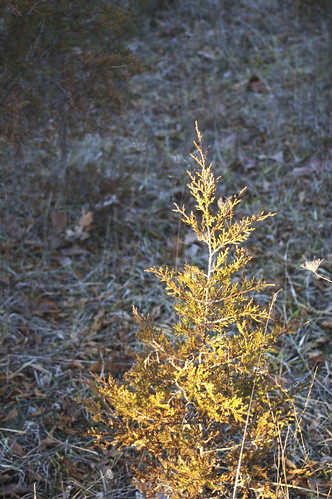
Eastern Red Cedar

Hybrid Chestnut Plots
Earlier I mentioned that the park was once old farmland, and there are structures that are still standing that remind us of this history. I took this picture of the silos on the way out as the sun was fading over the treetops. The silos bathed in the golden light, but it wasn't long before the trees and hills cast long shadows across the fields, a reminder that winter days don't last long. With the last light we headed home, leaving behind the trickling of the Fork, the sounds of the birds, and the rustling of the wind in the Sycamores.



 9:14 PM
9:14 PM



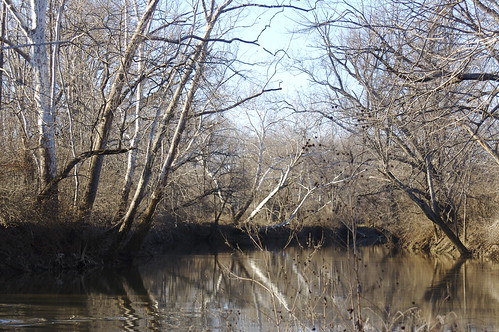
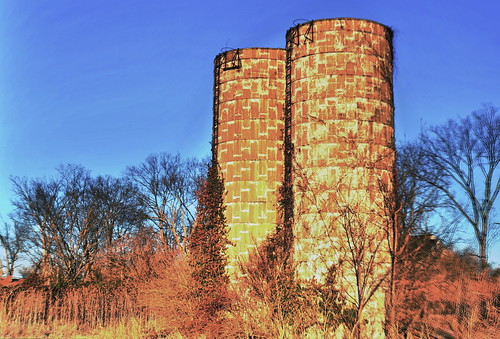
 Posted in:
Posted in: 




0 comments:
Post a Comment